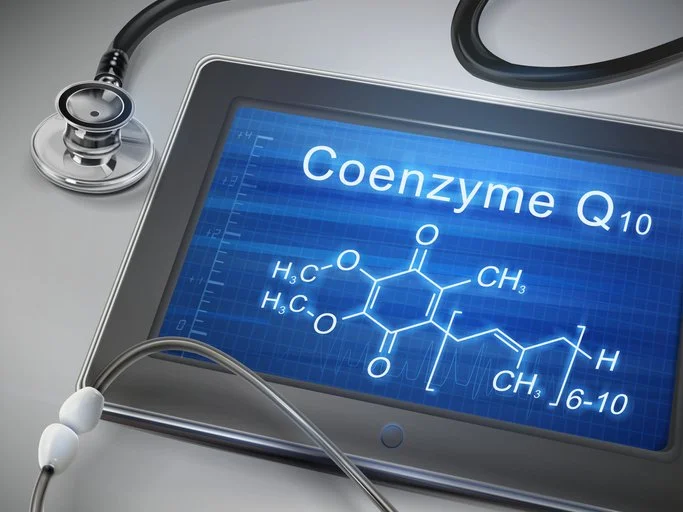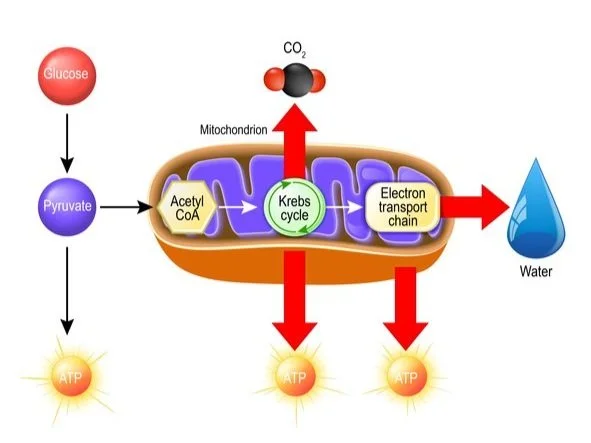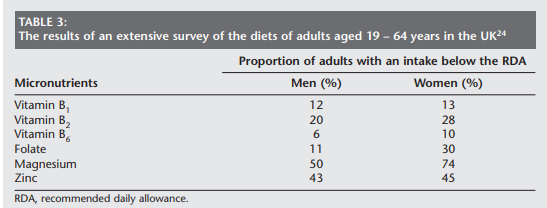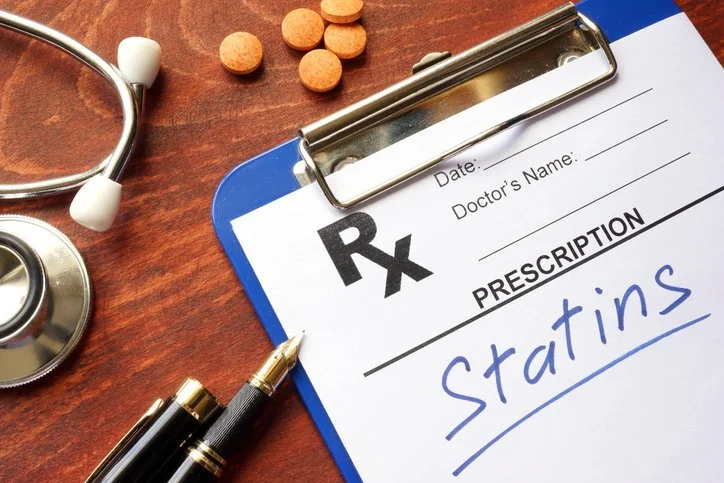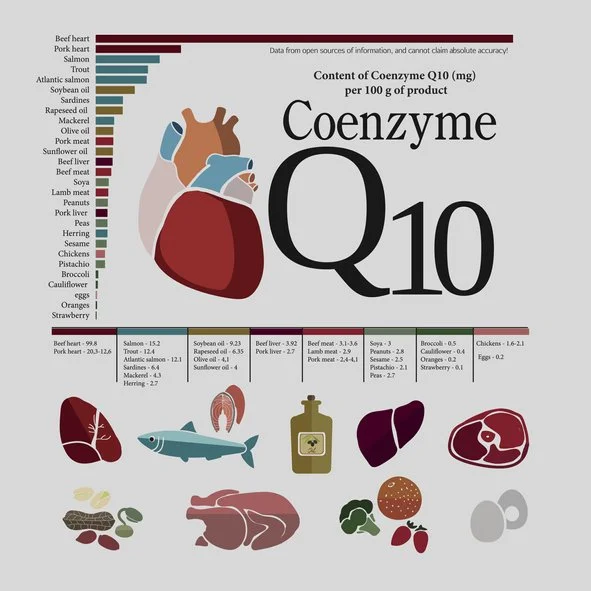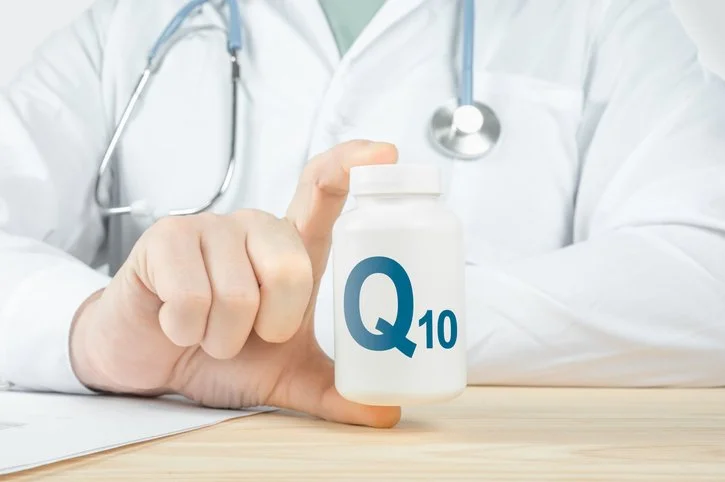Should You Be Taking CoQ10?
Coenzyme Q10 (CoQ10) was discovered in 1957 by Frederick Crane and got its name because it is an enzyme made of benzoquinone and ten isoprene units. It is so ubiquitous that it is also called Ubiquinone. 1 CoQ10 is a fat-soluble molecule found naturally in every cell and membrane in our bodies. It is a normal part of our diet, but we make much of it in our bodies primarily from the breakdown product of glucose. Under normal conditions, we produce all we need while we are young. But many factors can contribute to CoQ10 deficiency. These are aging, disease, dietary deficiency, statin drugs, and increasing tissue demands. 2 It has two main functions. Most importantly, it helps us make ATP, our energy source for life. Since it is critical for energy production, it is most abundant in heart muscle, pancreas tissue, the brain, and the liver. The other function is to increase some of our essential antioxidants and act as one. 3
The Popularity Of CoQ10
After its discovery in 1957, the Japanese began mass-producing it. Peter Mitchell won the Nobel Prize in 1978 when he discovered it was invaluable for energy production (making ATP) in the electron transport chain in our mitochondria. Other research has linked CoQ10 as a helpful adjunct in treating heart failure and heart disease. In 2017, CoQ10 accounted for $849.5 million in sales. 4
Nutrients, CoQ10, And Energy Production
Sugar in the form of glucose is broken in half into pyruvate. Once pyruvate is formed, it enters the mitochondria and is turned into acetyl CoA. This is part of a process called the Krebs Cycle. It is dependent on vitamins B1, B2, B6, B12, C, Folate, niacin, pantothenic acid, phosphorus, magnesium, zinc, calcium, copper, iron, manganese, and chromium. The Krebs cycle "turns" twice for every glucose molecule processed, and most of its energy becomes stored in ATP, and some energy will move onto the electron transport chain to help create a proton gradient and ultimately generate more ATP.
CoQ10 is an integral part of the electron transport chain, and it also has a complex 17-step process involving a whole string of B vitamins, vitamin C, and pantothenic acid. Incidentally, the steps involved in CoQ10 synthesis overlap extensively with cholesterol synthesis. 5
Nutrient Deficiencies Result In Less Energy
Deficiencies in energy production often arise since so many vitamins and minerals are needed for a fully functioning Krebs cycle and electron transport chain. They can be due to insufficient intake caused by weight-reducing diets, inadequate or imbalanced nutrition, eating disorders, or demanding periods such as extensive exercise or emotional and physiological stress. Increased requirements may also cause an insufficient vitamin and mineral status; for example, as may occur in pregnancy and lactation, during growth, in the elderly, smokers, chronic alcohol abusers, heart failure, and patients with certain underlying diseases. 6
CoQ10 And Heart Failure
There is a measurable deficiency of CoQ10 in blood and heart muscle in patients with heart failure. Furthermore, the degree of CoQ10 deficiency directly correlates with the degree of heart failure. CoQ10 can make the inner lining of blood vessels healthier in patients with heart failure. Likewise, when compared with placebo, CoQ10 improves artery linings in type-2 diabetes patients with high cholesterol. There is also some evidence that, when combined with selenium, CoQ10 supplementation in healthy elderly patients and elderly patients with diabetes, hypertension, and heart disease, may decrease cardiovascular mortality risk. 7 In what is considered the best study, called the Q-SYMBIO study, the investigators concluded that long-term CoQ10 treatment of patients with chronic heart failure is safe, improves symptoms, and reduces major adverse clinical events. 8
Statin Drugs And CoQ10
The drugs that stop the body from producing cholesterol are known as statins. As I mentioned earlier, our bodies' steps to make cholesterol and CoQ10 are the same for the first eight. However, at step nine, the pathways diverge. Some of the raw material becomes cholesterol, and some become CoQ10. The statin drugs stop the process at step four. Therefore, statins block the production of cholesterol, but, at the same time, CoQ10 as well. Researchers hypothesize that statin drugs may deplete the body of CoQ10. As muscle pain and cramping are common adverse effects of statins, they believe this depletion is the culprit. Sadly, the numerous studies of CoQ10 to reduce symptoms are generally inconclusive.
Some Other Uses Of CoQ10
Improved subjective fatigue and physical performance during bicycle exercise routines.
Migraine and headache prevention.
Decrease symptoms of depression in patients with bipolar disorder.
Decrease pain, fatigue, and morning tiredness in patients with fibromyalgia.
Improved aerobic capacity in patients with mitochondrial disorders.
Improved fasting blood glucose, insulin levels, and total testosterone levels in patients with polycystic ovary syndrome. 9
Dietary Sources of Coenzyme Q10
Since CoQ10 is concentrated in active tissues, the best sources are heart, liver, kidney, and muscular cuts from animals like beef, lamb, chicken, and fish. Plants also contain Ubiquinone but in much smaller amounts. The best plant source is soy, but heart contains 500% more. 10 The absorption of orally ingested CoQ10 is generally poor, but it is better absorbed when dissolved in fat and in its reduced form called Ubiquinol. 11
CoQ10 Supplements
CoQ10 as a supplement is available in single capsule doses of 30, 60, 100, 200, 300, 400, and 600 mg. Although there is no established minimum or maximum effective dose, the average dose necessary to attain a therapeutic blood level of over 2.5 mcg/mL is 200 mg taken twice daily with a meal. Coenzyme Q10 supplements are generally well-tolerated with only minor and infrequent adverse effects, including stomach upset, nausea, vomiting, and diarrhea. Other rare adverse effects have included dizziness, photophobia, irritability, headache, heartburn, and fatigue. Don't take CoQ10 with kidney and liver disease because studies are lacking. Patients using chemotherapeutic drugs should also avoid using CoQ10 since there is little data on the interaction of CoQ10 with these drugs. Since CoQ10 has been shown to lower fasting blood glucose in some patients, diabetics and those prone to low blood sugar should exercise caution. Finally, CoQ10 use should be avoided in nursing mothers, children, and infants as studies in these populations are also lacking. 12
Conclusion
Coenzyme Q10 is one of the most popular supplements available. However, the Ubiquinol form is best. It is generally well tolerated. Many studies show it helps alleviate specific symptoms. Unfortunately, we have less CoQ10 as we age. So supplementation in our later years may prove more beneficial.
On the other hand, as we see in the “healthy heart” illustration above, many vitamins and minerals are needed to produce energy, so that CoQ10 may be receiving unearned attention. For instance, magnesium is necessary for numerous steps in energy production, whereas CoQ10 is only needed for one step. As such, magnesium is probably more critical than CoQ10. Sadly, half of Americans are deficient in magnesium. 13 So, as always, my final bit of advice is to eat a nutrient-dense diet that includes animal-based fats and proteins, including organ meats. Take supplements with caution, and consult with your medical professional for advice.
